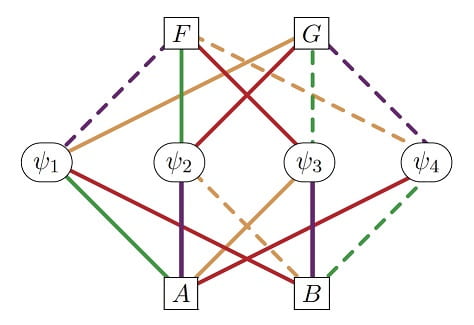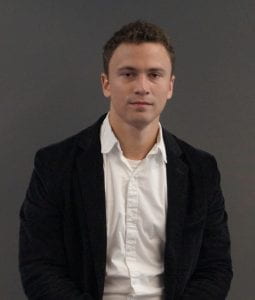
In its 21-year history, the Summer Student Theoretical Physics Research Session (SSTPRS) led by Brown Theoretical Physics Center (BTPC) Director S. James Gates Jr. has been held at either the University of Maryland, the University of Iowa, or since 2017 at Brown University. SSTPRS had its origins as a joint collaboration between Gates and Professor Vincent G. J. Rodgers (University of Iowa). Every year up until 2020, this unique opportunity for undergraduate and graduate students was held in person.
The COVID-19 outbreak required various adjustments to the typically four-week long program, including making the program completely virtual on Zoom. “We ran the program five weeks as we felt it necessary to get the students to the usual point of readiness to engage authentic research that has been our tradition,” shared Gates. In addition to the extra days on the calendar, the daily schedules were adjusted to reduce the amount of online instruction to 12 hours per week, compared to 20 to 25 hours per week of in-person instruction in previous years.
In his 48 consecutive years of teaching, Gates never imagined having such a diverse group of students in his program. Participants this year included three from Brown University, three from Caltech, three from the Chinese University of Hong Kong, a participant in Abu Dhabi, one from UCDavis, and the remainder from the University of Maryland. This was possible because of the technology of Zoom.
This was Assistant Professor Kory Stiffler’s eighth year participating in the SSTPRS, and his fifth as an instructor. He discussed some of the challenges and resulting achievements of this new model. “The instructors had to be more efficient, and we were able to cover nearly as much material as the typical in-person sessions of the past. The students’ attentiveness and hard work was crucial in these successes. They were truly a remarkable group of students and were able to successfully meet all of the challenges along with the instructors,” added Stiffler.
Communicating real-time long and detailed calculations to students was one obstacle to overcome. The instructors were able to use writing tablets to solve this problem. They then had the students take still pictures of their handwritten calculations and use the share screen feature of Zoom.
From the perspective of the 22 students in this year’s program, this new virtual model for the SSTPRS was also a win. Brown University junior Laurel McIntyre had no previous experience with physics research. She applied to the program because she wanted to expand her skills and begin deciding which area of physics she would like to pursue. McIntyre notes, “I think the mentors handled the transition to virtual well. They often put us in Zoom breakout rooms and encouraged us to communicate with each other because collaboration is important in research.” As a student without research experience, this was a great platform for McIntyre and others to build a foundation for future research opportunities.

In the previous semester, third-year Brown PhD student Aleksander Cianciara attended Professor Gates’ research group meetings to learn more about supersymmetry and adinkras, pictures that encode the mathematics of how supersymmetric particles interact. His interest in adinkras inspired him to apply for the SSTPRS program this summer. “I was really impressed by how the mentors were able to create and facilitate an effective curriculum to take students with ranging knowledge of physics and get them up to speed with the essentials necessary for research in theoretical physics,” shares Cianciara. “I think it’s a powerful testament that physics isn’t about memorizing pages of equations and facts, but rather about learning to think through an idea logically and rigorously from start to finish. As the frontiers of knowledge continue to expand, I wonder if this program is perhaps providing a new paradigm for how physics could be taught in the future.”
Although it was an unexpected change to a summer program with two decades of in-person instruction under its belt, the adaptation to virtual was a success. When asked whether he thought future programs would be better in-person or virtual, Stiffler concluded, “I do see a hybrid of in-person events with virtual components added as a future possibility.”
Along with Gates and Stiffler, this summer’s SSTPRS instructors were Professor Kevin Iga (Pepperdine University), Dr. Konstantinos Koutrolikos (Brown), Ms. Yangrui Hu (Brown), and Ms. Sze-Ning Mak (Brown). Mr. Andrew Dewald (University of Iowa) worked as a Teaching Assistant and Dr. Pete Bilderback (Brown) and Ms. Mary Sutton (Brown) worked as Administrative Assistants.
